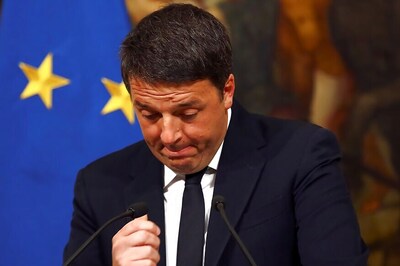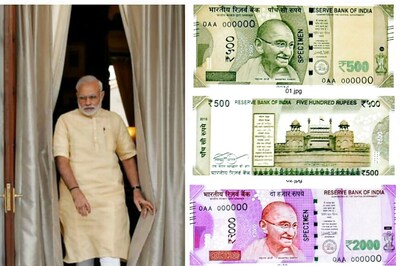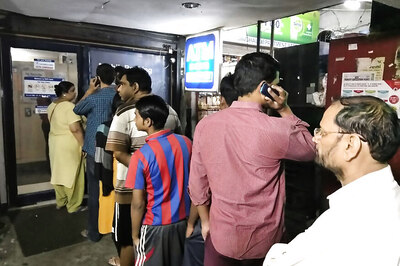
views
Betsy Reed, the editor of Guardian US wrote in the editorial of the British newspaper ‘The Guardian’ on May 18, 2014, “Today, 18 May, may well go down in history as the day when Britain finally left India. Narendra Modi’s victory in the elections marks the end of a long era in which the structures of power did not differ greatly from those through which Britain ruled the subcontinent. India under the Congress party was in many ways a continuation of the British Raj by other means… The India those men and women lived in was one that, like its predecessor, was centralised, garrisoned, culturally constricted, and ruled by a relatively small English-speaking elite whose attitude toward the masses was alternately benevolent and exploitative but never inclusive.”
Hundred per cent true, Bharat (i.e. India) after centuries of slavery, got political freedom on August 15, 1947. But it had to wait much longer to get cultural freedom and cultural independence which it got on January 22, 2024. On this auspicious day, when the Pran Pratishtha (consecration ceremony) of Lord Ram and the newly constructed temple in the ancient cultural city of Ayodhya took place, an atmosphere of joy and fervour permeated not only Bharat but was visible among the people associated with Bharat living in different parts of the world. This momentous occasion, indeed, heralds the much-awaited cultural renaissance of Bharat with the religious icon Shri Ram as the focal point.
Shri Ram of Ayodhya is not only a God, an incarnation of Lord Vishnu, but also a great religious and cultural icon, influencing, for ages, not just the entire Bharat but various regions of the world; the ‘Ramcharitra’ (character of Ram) being not only universal and timeless but also all-inclusive and beyond all creeds and castes. It’s not without reason that people of all regions, languages, castes and creeds have narrated the ‘Ramkatha’ (story of Ram) in their own ways. Besides, Valmiki’s Adi Ramayana or Tulsidas’s Ramcharitmanas revered by Hindus, in Buddhism, there are Jataka stories related to Ram like ‘Dasaratha Jatak’, ‘Anamak Jatak’ and ‘Dasaratha Kathanak’.
Ramkatha is also available in Jain literature as in ‘Paumchariyam’ written by Vimalsuri, ‘Paumchariyu’ written by Swayambhu, and ‘Charitra Purana’ to list a few. Besides, Shri Ram also has an important place in Sikhism, where he is referred to as ‘Avtaar Ram’ or ‘Raja Ram’. The word Ram appears in the Guru Granth Sahib more than 2,500 times. Ram has been mentioned as one of the 24 divine incarnations of Lord Vishnu in ‘24 Avatars’ in the ‘Dasham Granth’ written by Guru Gobind Singh.
Apart from the above, Muslim poet Rahim, a contemporary of Tulsidas praises the greatness of Ram. Urdu poet Iqbal goes on to say that “the cup of Hindustan (i.e. Bharat) is full of truth, and all the philosophers who have lived in the ‘Maghrib’ (West) are extensions of Shri Ram of India”.
According to Father Camille Bulcke, a Belgian Jesuit missionary in India, known to be the most renowned scholar and researcher of Ram Katha, “the ideals, values and social harmony for which Shri Ram lived and fought are deeply ingrained in the Indian mind, life and culture.” Needless to say, Shri Ram is a cultural icon beyond all sects and creeds who appears to be the true symbol of the term ‘secular’ used in the preamble of the Constitution of Bharat.
Besides, if considered spatially, from east to west and from north to south, ‘Ram Katha’ resonates in every part of Bharat. In the north, there is Valmiki Ramayana and Ramcharitmanas, while in the south, there is Kamb Ramayana and Ranganatha Ramayanam. In the east, there is Kritivasa Ramayana or the various Ramayanas of the Northeast, while in Maharashtra, in the western part, there is Bhavartha Ramayana.
Among various Indian languages, 11 Ramayanas are found in Hindi, eight in Marathi, 25 in Bengali, 12 in Tamil, 12 in Telugu and six in Oriya. Apart from this, Ramkatha has also been composed in Gujarati, Malayalam, Kannada, Assamese, Kashmiri, Urdu, Arabic, Persian, Santhali and many languages of the Northeast. It’s noteworthy that literature based on Ramcharitra transcends the boundaries of Bharat, and is available in many countries of the world outside Bharat. Kakabinramayana in Indonesia; Seratram, Sairiram, Ramkeling, Pataniramkatha in Java; Ramkien in Thailand; Tibetan Ramayana in Tibet; Khotaniramayana in Turkistan; Ramkerti, Khamai Raramayana in Indo-China; and Utoki Ramayana in Myanmar are some of the instances of the universality of Shri Ram.
Shri Ram is a true symbol of Samrasta (social harmony) and all-inclusiveness also. It is noteworthy that apart from the so-called upper castes, OBCs, Dalits and tribal communities are also fond of Ram or Ramcharitra. In the medieval period, during the Muslim and Mughal rule, the great saint Kabir, of Julaha (weaver) caste celebrated his devotion in his poetry saying “Hum Ghar Aaye Raja Ram Bharatar” (Let’s celebrate that King Ram has come to my house), Saint Raidas of the Charmkar (cobbler) caste sang “Jab Mann Milo Ram-Sagar So” (when my heart and mind immersed in the ocean that is Ram), the tailor caste saint poet Namdev penned “Dahdisi Ram Rahya Bharpuri” (Ram exists in all the directions), while the saint poet Sen of the barber caste authored “Ram Naam Bhaj Ley” (Let’s chant Ram Naam).
Shri Ram, a real embodiment of social harmony, despite belonging to a royal lineage, was empathetic towards all communities, castes, and classes, be it the representatives of the now recognised OBC communities — Kevat and Nishadraj — or the Kol, Kirat, Bhil — the tribal people. He also did not shy from partaking in the offerings of the half-eaten berries of Bhil devotee Shabari Mata. The life and character of Ram today, presents a loud and clear message to those vested interests who try to divide Hindu society in the name of caste and class or tribal and non-tribal. Where Shri Ram is seen as compassionate and kind, he is also brave and valiant, ending the terror of demons, annihilating the ‘rakshasas’ (demons) embodying the several facets of goodness against prevailing evil and the strength to overcome it. This face of Shri Ram is a global message for the nation and the world plagued by various forms of terrorism and extremism.
Such a universally revered and great character influenced not only the ancient sages, saints, devotees, and poets but also great thinkers and leaders of the modern era like Swami Vivekananda, Maharishi Aurobindo, Bal Gangadhar Tilak, Rabindranath Tagore, Mahatma Gandhi, Vinoba Bhave and Ram Manohar Lohia among others, who made Ram the subject of their writings.
However, it is unfortunate that some politicians or political parties and so-called secularist intellectuals with vested interests continuously created obstacles in the construction of the temple for the ‘Sanskritik Purushottam’ (the greatest cultural icon) Shri Ram, creating fake narratives with regard to the newly constructed Ram temple and the consecration ceremony in the name of caste and religion, auspicious date and time, location of the temple or Ram’s place of birth, the list is endless. On these shallow pretences, even the Pran Pratishtha was boycotted. These are the same people who earlier even questioned the very existence of Shri Ram. These people must understand that Ram is present in the ‘Jana Gana Mana’ (minds of the people) of Bharat.
It is worth noting that not only the Jain, Buddhist, and Sikh communities but also Muslims, Christians and Parsis have generously contributed to the construction of the current Ram temple. This country, Bharat, is indebted to every person, organisation, leader or party who made the dream of Ram Mandir come true. It is true that a temple to Ram has been constructed, but this is also the dawn of a national cultural renaissance.
Prof. Niranjan Kumar is the Chairman of the ‘Value Addition Courses’ Committee as well as the Dean of Planning at Delhi University. He tweets at @NiranjankIndia. Views expressed in the above piece are personal and solely that of the author. They do not necessarily reflect News18’s views.




















Comments
0 comment